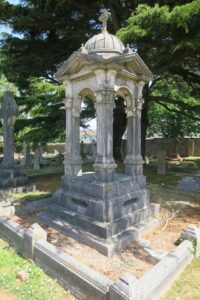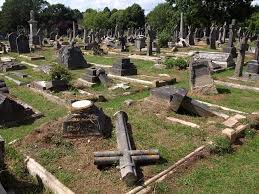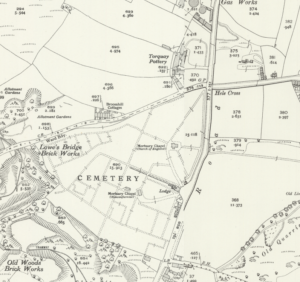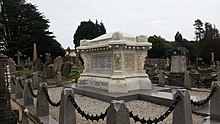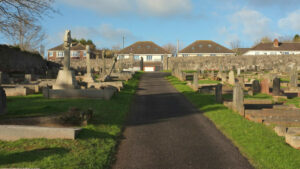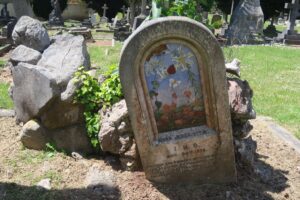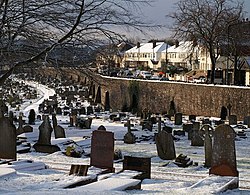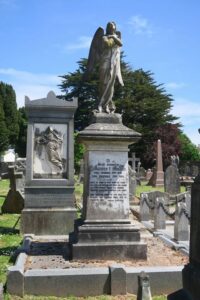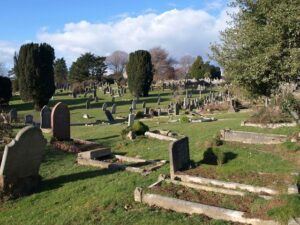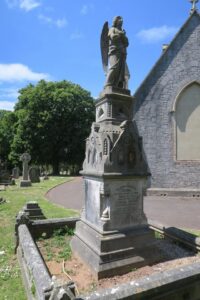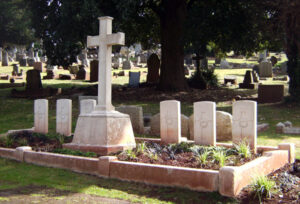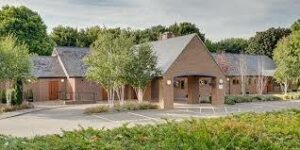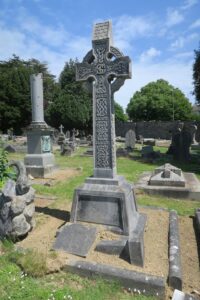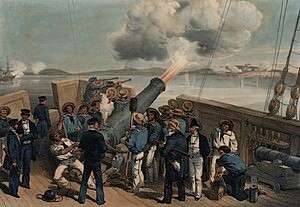As Torquay grew in size and density, the traditional burial grounds of St Saviour’s and Upton became overused.
And even though additions were made to Torre’s churchyard in 1836 and 1842 this still proved inadequate to satisfy an increasing demand.
Alongside the competition for space it was also thought that urban medieval churchyards were a source of ‘miasma’, a stench which it was believed could poison nearby homes and engender disease.
Recognising these escalating problems, in February 1850 residents petitioned for a prohibition on further burials at Upton. More capacity was clearly required and so two years later sixteen acres of agricultural land adjacent to brickworks and potteries was purchased on high ground on the outskirts of town.
This was at a place named after the Old English word for ‘hidden’, Hele, and it was decided that the new burial ground would be a High Victorian garden cemetery. Here would be the town’s final resting place for locals and visitors when Torre’s churchyard was finally closed in 1895.
Significantly, the new cemetery was operated by a private venture, ‘The Torquay Extra Mural Cemetery Company’, and not the ‘communally-owned’ Church. This was an endeavour that effectively made for the privatisation of death and burial in Torquay.
By relocating the deceased far away from the town centre, the cemetery further allowed for a much larger burial ground, one that could be designed to fit evolving ideas around social ordering. This distancing effectively removed the dead from the immediate realm of the living where they had been at the centre of the community for well over a millennia.
The opening of the Pere Lachaise Cemetery in Paris in 1815 had provided inspiration for the designers; and so the Torquay necropolis was landscaped with sweeping roads wide enough for carriages and linked by smaller paths for strolling. Careful planting of trees and architectural features were designed to impress and give the effect of a park, with the dual chapels taking the place of a country house.
Further emphasising the cemetery as a place apart, the entrance featured cast-iron carriage gates set in high stone walls near a Tudor Gothic style stone lodge. Such entrances were elaborately fashioned, informing visitors that this was an alternative community where they could leave the busy tourist and mercantile town outside to enter a spiritual realm of contemplation.
In contrast to the old Torre graveyard, there would be no equality in such a final resting place. The grounds were designed for the raising of physical monuments appropriate to the deceased’s status.
This was a new opportunity for conspicuous display fully utilising the topography to appeal specifically to the emerging middle classes keen to distance themselves from working folk and to demonstrate a superior position in the town’s social strata.
Even in death, nothing would stay the same however. Towards the end of the nineteenth century status anxiety waned as people began to object to the escalating cost of funerals, while resistance grew to the Victorian cult of ostentatious mourning.
What made most immediate difference was the Great War which challenged the certainties of Empire and Faith, a reaction that saw cemeteries being laid out in new ways.
Lavish displays for the dead diminished, headstones became more discreet, and monuments less extravagant. Then we see the simple memorials to the twentieth century casualties of conflict in the 136 burials associated with the First World War and the 97 from the Second World War. Here the idea of equality in death was restored, superseding Victorian ranking.
The greatest change was the gradual acceptance of cremation.
First proposed by a handful of radical thinkers in the late nineteenth century, in 1902 Parliament passed the Cremation Act which formalised the practice. For this new way of managing the ending of life, in 1929 the cemetery acquired another area from the Cary Estate to the north of Hele Road. Set away from the old burial grounds, here a crematorium was built.
The cemetery’s grounds were further extended in 1869 and again in 1921; and in 1975 management was taken over by Torbay Council, so returning the amenity to public ownership.
Today Torquay Cemetery remains a place of both continuity and change. It parallels the town’s expansion and continues to mirror the evolution of our attitudes to life and the leaving of it.
‘Torquay: A Social History’ by local author Dr Kevin Dixon is available from Artizan Gallery in Fleet Street, Torquay, or:



